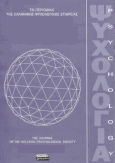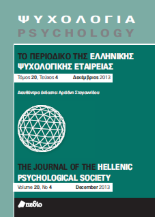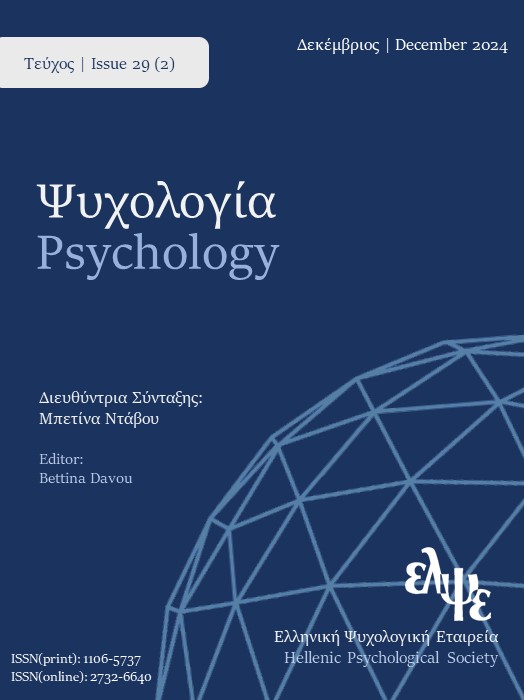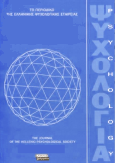Αναζητώντας τα Χαρακτηριστικά του Ηθικού Ηγέτη: Μια εμπειρική μελέτη στον χώρο εργασίας
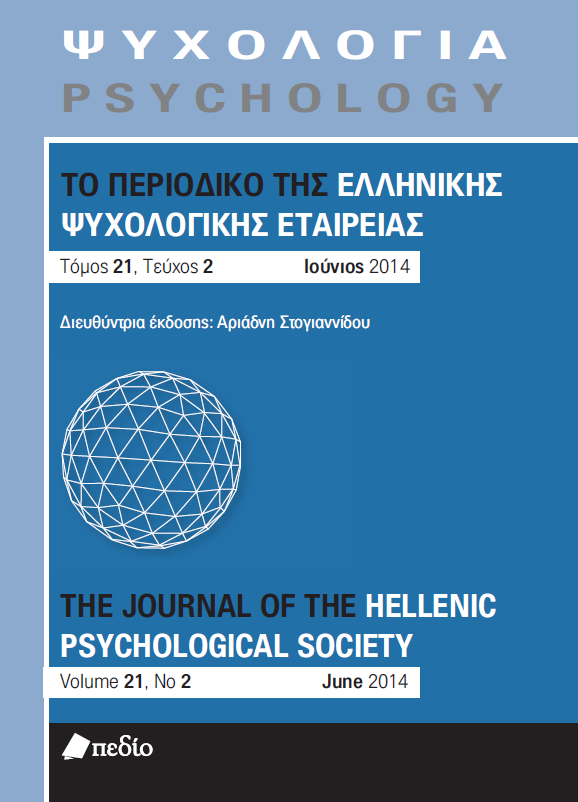
Περίληψη
Τα τελευταία χρόνια έχουν προταθεί αρκετές θεωρητικές προσεγγίσεις για την ηθική ηγεσία, οι οποίες παρουσιάζουν διαφοροποιήσεις τόσο ως προς τον αριθμό όσο και ως προς τον τύπο των χαρακτηριστικών που υιοθετούν. Στόχος της παρούσας έρευνας ήταν η βιβλιογραφική ανασκόπηση, η καταγραφή και η εμπειρική αξιολόγηση όλων των ηθικών χαρακτηριστικών που εμφανίζονται στη διεθνή βιβλιογραφία για τον εντοπισμό των σημαντικότερων από αυτά, ώστε να δημιουργηθεί ένα ολιστικό μοντέλο ηθικής ηγεσίας. Από την συστηματική βιβλιογραφική μελέτη εντοπίστηκαν είκοσι εφτά διαφορετικές διαστάσεις που περιγράφουν τον ηθικό ηγέτη. Ακολούθησε η εμπειρική τεκμηρίωση των διαστάσεων μέσα από την αξιολόγηση της σημαντικότητας καθεμίας από αυτές σε ένα δείγμα σαράντα ενός προϊσταμένων και υφισταμένων από τον δημόσιο και ιδιωτικό τομέα. Τα αποτελέσματα της έρευνας έδειξαν ότι όλες οι διαστάσεις αξιολογήθηκαν ως σημαντικές από τους συμμετέχοντες, με πιο σημαντικές τις διαστάσεις της «εμπιστοσύνης» και της «Συνεργασίας» και λιγότερο σημαντικές αυτές της «εφαρμογής Πράσινης Πολιτικής» και της «Ανάπτυξης ηθικού Οράματος». Ο δείκτης συμφωνίας προϊσταμένων-υφισταμένων ως προς την αξιολόγηση των διαστάσεων ήταν υψηλός (ICC=0,91), ενώ μόνο οι διαστάσεις της «Ακεραιότητας» και της «ηθικής ευθύνης» αξιολογήθηκαν ως περισσότερο σημαντικές από τους προϊστάμενους. Από τα αποτελέσματα αυτά προκύπτει ότι και οι είκοσι εφτά διαστάσεις είναι σχετικές και ποιοτικώς σημαντικές για τον καθορισμό της έννοιας του ηθικού ηγέτη.
Λεπτομέρειες άρθρου
- Πώς να δημιουργήσετε Αναφορές
-
Μητροπούλου Ε. Μ., Τσαούσης Ι., Ξανθοπούλου Δ., & Πετρίδης Κ. (2020). Αναζητώντας τα Χαρακτηριστικά του Ηθικού Ηγέτη: Μια εμπειρική μελέτη στον χώρο εργασίας. Ψυχολογία: το περιοδικό της Ελληνικής Ψυχολογικής Εταιρείας, 21(2), 161–182. https://doi.org/10.12681/psy_hps.23274
- Τεύχος
- Τόμ. 21 Αρ. 2 (2014)
- Ενότητα
- ΕΜΠΕΙΡΙΚΕΣ ΕΡΓΑΣΙΕΣ

Αυτή η εργασία είναι αδειοδοτημένη υπό το Creative Commons Attribution-ShareAlike 4.0 International License.
Το περιοδικό ΨΥΧΟΛΟΓΙΑ έχει υιοθετήσει μία πολιτική Platinum open-access. Τα έξοδα υποβολής, επεξεργασίας ή δημοσίευσης των εργασιών καλύπτονται από την Ελληνική Ψυχολογική Εταιρεία. Τα πνευματικά δικαιώματα των δημοσιευμένων εργασιών προστατεύονται από την άδεια 'Creative Commons Attribution-ShareAlike 4.0 International'. Οι Συγγραφείς διατηρούν τα Πνευματικά Δικαιώματα και χορηγούν στο περιοδικό το δικαίωμα της πρώτης δημοσίευσης. Η άδεια αυτή επιτρέπει σε τρίτους, να χρησιμοποιούν την εργασία σε οποιαδήποτε μορφή, με την προϋπόθεση της διατήρησης των διατυπώσεων που προβλέπονται στην άδεια σχετικά με την αναφορά στον αρχικό δημιουργό και την αρχική δημοσίευση στο περιοδικό ΨΥΧΟΛΟΓΙΑ. Επιπλέον, κάθε διανομή της εργασίας οφείλει να γίνεται με τους ίδιους όρους διανομής, δηλαδή με την ίδια άδεια Creative Commons.




